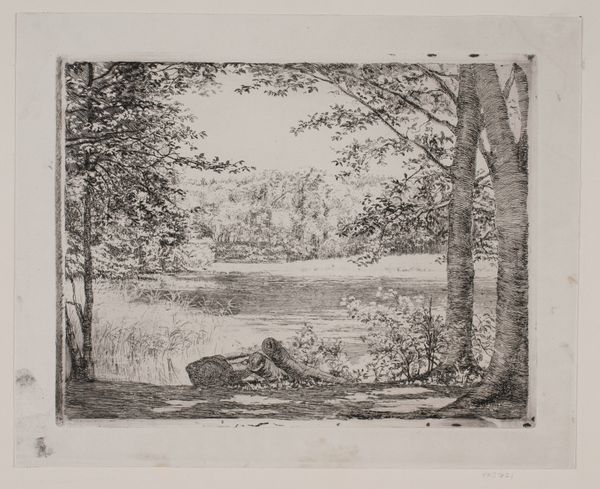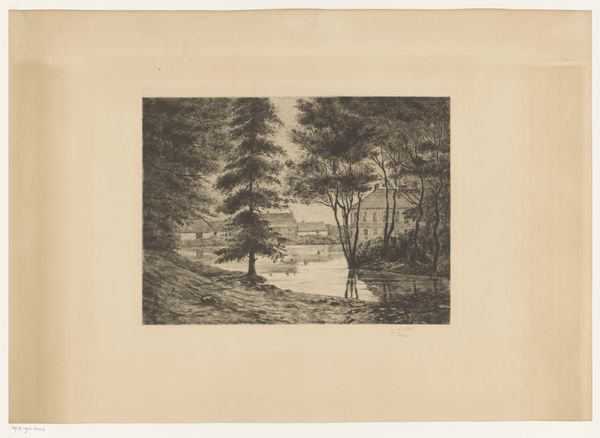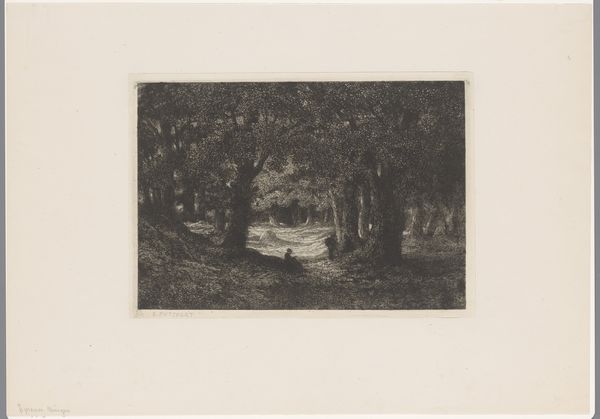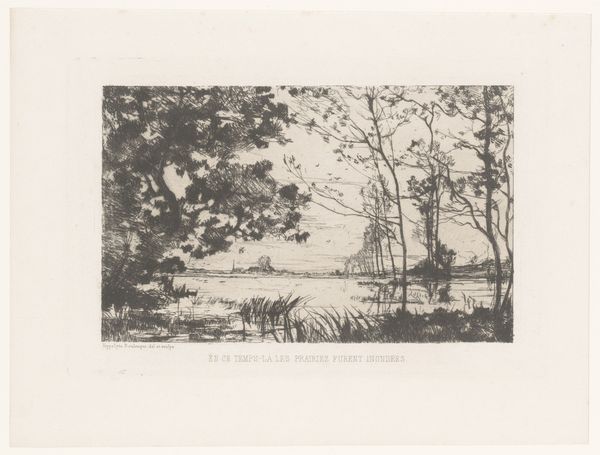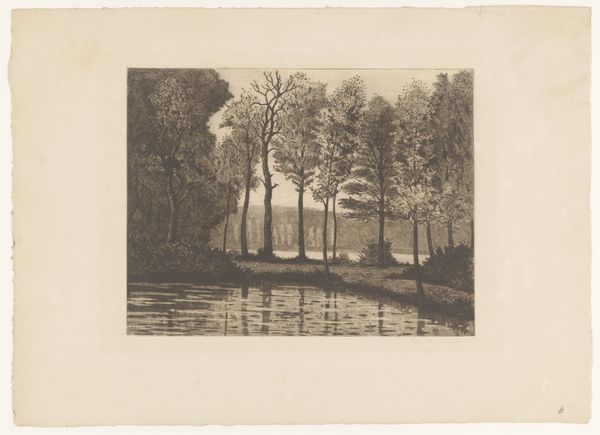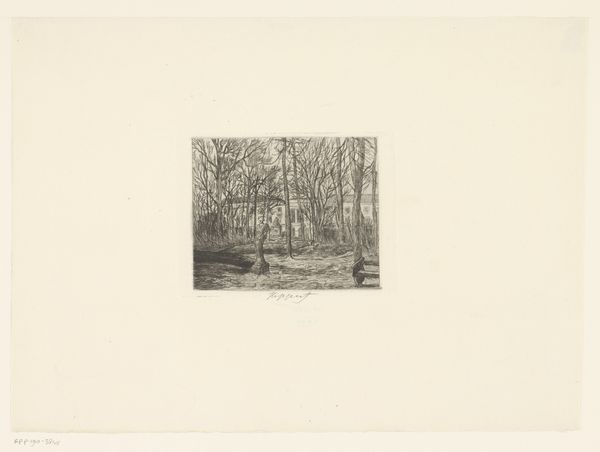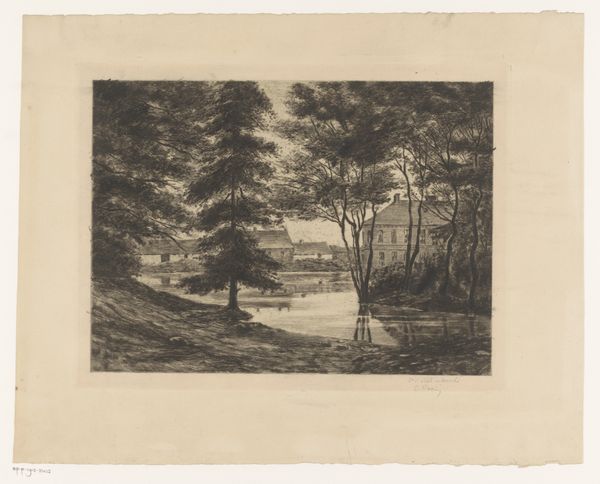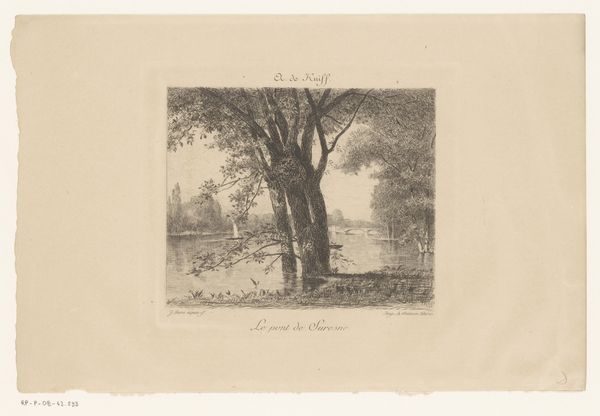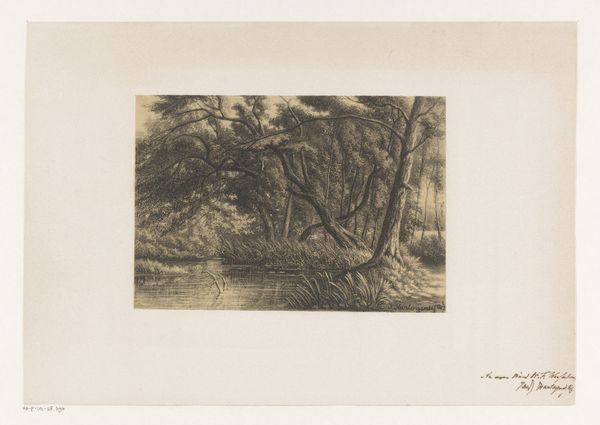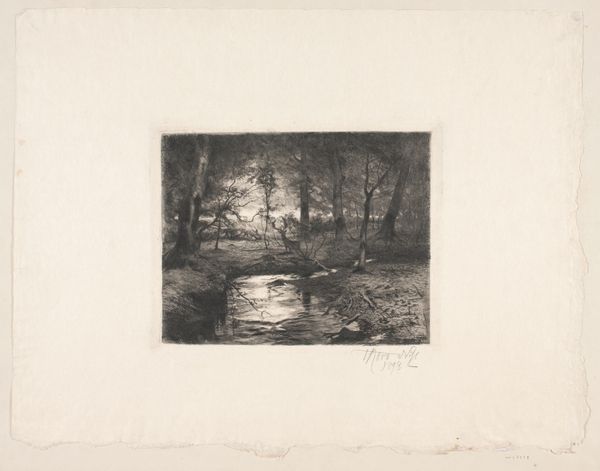
print, etching
# print
#
impressionism
#
etching
#
landscape
#
realism
Dimensions: 316 mm (height) x 450 mm (width) (bladmaal), 199 mm (height) x 254 mm (width) (plademaal)
Curator: Let's turn our attention to "A Forest Lake Near Hellebæk," a print made by Carl Bloch in 1887. It's an etching. Editor: The overall effect is one of calm, wouldn't you agree? It feels very private, an intimate glimpse of nature. All the foliage provides a frame to this peaceful expanse of water. Curator: It is indeed a tranquil composition. What strikes me is Bloch's choice of etching as a medium. Though typically known for his religious paintings, here we see him exploring a more intimate landscape, possibly suggesting the etching print market, was becoming increasingly appealing to artists outside traditional fine arts circles. The democratization of art consumption, if you will. Editor: That's interesting to think about! The image itself seems to tap into some deeper, almost universal idea of nature as a place of reflection. Notice the positioning of the fallen log in the foreground; it could be interpreted as representing the cycle of life, decay leading back to new growth. Curator: Exactly! And the detailed etching lines serve a purpose. The high level of details within Bloch’s method here elevates printmaking in relation to drawing, showcasing labor value, and appealing to a wealthier, artisanal market interested in collecting detailed images that simulate nature. Editor: Are we assuming wealthy? This subject is also very much in keeping with the Romantic fascination with nature—it would seem an etching such as this could easily allow for more widespread distribution, in publications and journals, as well as by individual sales. Curator: True enough. Though one could imagine prints allowed people to enjoy, display and revere imagery of a scene that was personally linked with reflection on personal experience of natural world. And regardless, there's still value attached. Bloch took his craftsmanship seriously, no matter the subject. Editor: It does spark that sense of the sublime. It seems to imply this location may operate as more than just naturalistic scene. Almost like it exists inside a poem… something more felt, less depicted. Thank you for bringing the social implications of print-making into focus for me here, Curator! Curator: And thanks for your keen insight on symbolic meaning.
Comments
No comments
Be the first to comment and join the conversation on the ultimate creative platform.

